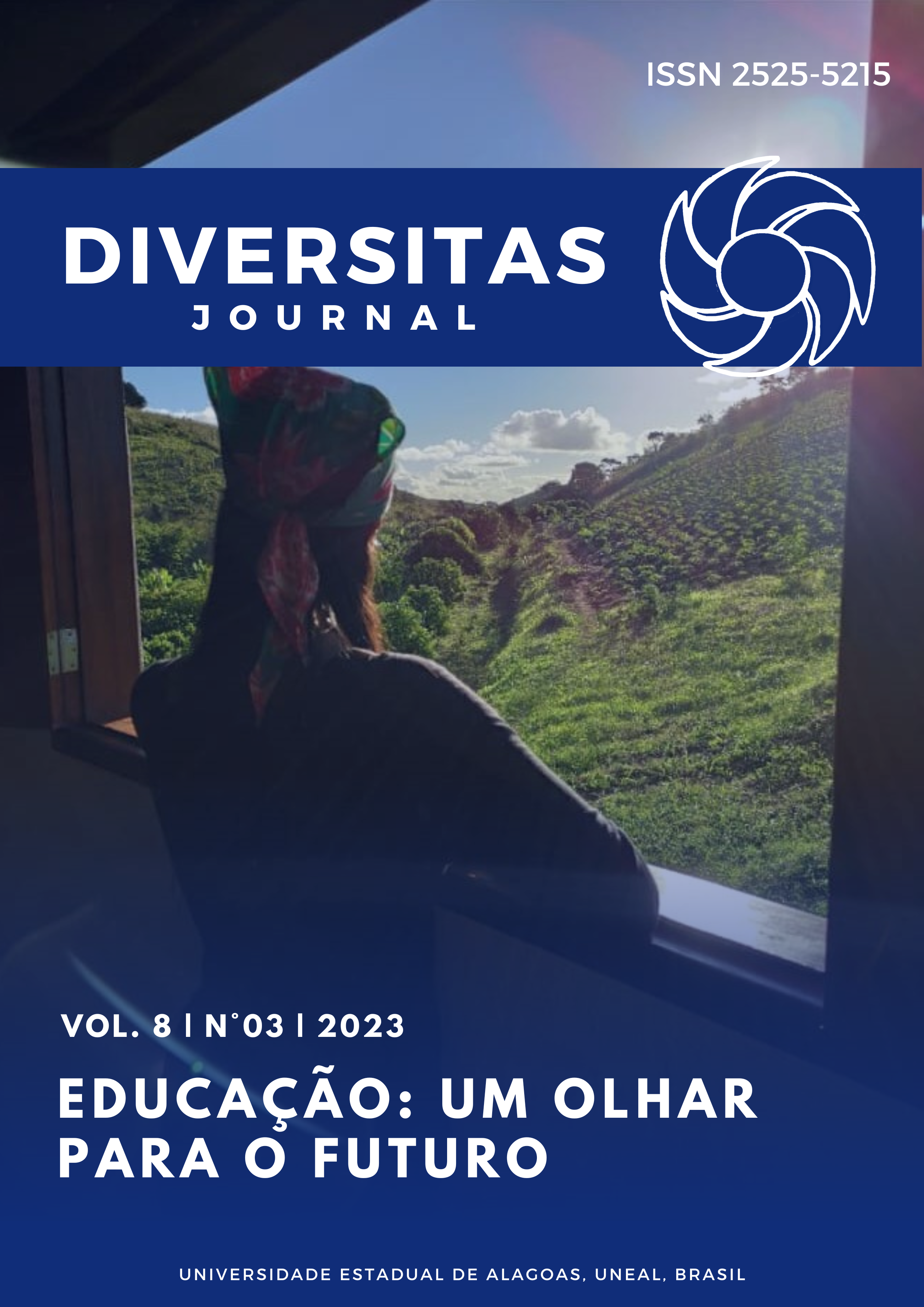Investindo em Capital Social
The Ifugao Cultural Practices Builds Bonding, Bridging, and Linking amidst Pandemic
DOI:
https://doi.org/10.48017/dj.v8i3.2690Palavras-chave:
Capital social, Valor monetário, Investimento, Valor não monetário, Comunidade Cultural IfugaoResumo
O capital social é semelhante ao capital real no sentido de que as pessoas com mais dinheiro geralmente estão em melhor situação e têm acesso mais fácil a oportunidades de investimento. O objetivo do estudo é determinar como e por que as comunidades de Ifugao continuam a investir em capital social em suas práticas culturais. A etnografia, como um projeto qualitativo, é a investigação utilizada neste estudo. A observação do participante, juntamente com as entrevistas e juntamente com a discussão do grupo focal, são as ferramentas usadas na coleta de dados. Os dados coletados foram analisados por meio da análise temática. Os resultados revelaram que a maioria dos artistas e participantes tem mais de 55 anos, são homens, casados, com nível universitário, funcionários do governo e têm um salário mensal de mais de 40.000 Php. A maioria dos participantes dos aniversários, noivados, casamentos e velórios de Ifugao perceberam que benefícios não monetários foram alcançados, como fortalecer os laços entre famílias e amigos próximos, estreitar laços com amigos distantes e conectar relacionamentos com outros participantes. Em termos de investimento, o casamento tem alto custo, alto retorno e alto valor monetário de retorno, enquanto a morte tem baixo custo e alto valor monetário de retorno. A comunidade cultural de Ifugao (Tuwali) investe no capital social, fortalece os laços, conexões, confiança e reciprocidade de suas famílias, amigos e comunidades
Métricas
Referências
Bordieu, P. 1985. Forms of capital: In handbook of theory and research for the sociology of education. ed. John G. Richardson, 241-58. New York: Greenwood Press. https://home.iitk.ac.in/~amman/soc748/bourdieu_forms_of_capital.pdf
Coleman, J. S. 1988. Social capital in the creation of human capital. American Journal of Sociology. 94: 95-120.
Dasgupta, P. 1988. Trust as a commodity. In trust: making and breaking competitive relations. D. Gambetta (Eds). Blackwell, Oxford.
Glaeser, E., et. al., 2002. An economic approach to social capital. The Economic Journal. https://www.academia.edu/54955756/An_Economic_Approach_to_Social_Capital_
Griswold, W. 2013. Cultures and societies in a changing world. SAGE Publications, Inc. https://dx.doi.org/10.4135/9781452240534
Grootaert, C. 2002. Quantitative analysis of social capital data in understanding and measuring social capital: A multidisciplinary tool for practitioners. The World Bank, Washington DC. https://openknowledge.worldbank.org/handle/10986/14098 License: CC BY 3.0 IGO
Grootaert, C. and Bastelaer, T. 2002. Understanding and measuring social capital: A multidisciplinary tool for practitioners. World Bank, Washington D.C. https:// RePEc:wbk:wbpubs:14098
Hampel-Milagrosa, A. 2007. Social capital, ethnicity and decision-making in the Philippine vegetable market. ZEF Discussion Papers on Development Policy, No. 117. University of Bonn, Center for Development Research (ZEF), Bonn. https://doi.org/10.22004/ag.econ.7120
Imbulana A., J., & Managi, S. 2021. The role of social capital in COVID-19 deaths. BMC Public Health 21, 434. https://doi.org/10.1186/s12889-021-10475-8
Narayan, D. 1999. Bonds and bridges: Social capital and poverty. Washington: The World Bank.
Ostrom, E., and Ahn, T. 2001. A social science perspective on social capital: Social capital and collective action. Workshop in Political Theory and Policy Analysis, Indiana University. http://www.indiana.edu/~workshop
Putnam, R. 1993. Making democracy work: Civic traditions in modern italy. Princeton University Press.
Putnam R. 2000. Bowling alone: The collapse and revival of American community. New York: Simon & Schuster. https://www.jstor.org/stable/30026373
Putnam, R. 2001. Social capital: measurement and consequences. Isuma: Canadian Journal of Policy Research. 2, 41-51.
Schuller, T., Baron, S., & Field, J. 2000. Social capital: A review and critique. In Baron et al. (Eds.) Social capital: Critical perspectives. Oxford: Oxford University Press.
Woldehanna, T., et. al., 2022. Social capital as a double-edged sword for sustained poverty escapes in Ethiopia. World Development. Vol. 158. https://doi.org/10.1016/j.worlddev.2022.105969
Woolcock M. 2001, The place of social capital in understanding social and economic outcomes. Isuma, 2 (1). https://www.oecd.org/innovation/research/1824913.pdf
Woolcock M. and Narayan D. 2006. Social capital: implications for development theory, research, and policy revistited. In Bebbington A., Wookcock M., Guggenheim S.E. and Olson E.A. (eds), The Search for Empowerment: Social Capital as Idea and Practice at the World Bank, Bloomfield: Kumarian Press, Inc: 31–62. http://documents.worldbank.org/curated/en/961231468336675195/Social-capital-implications-for-development-theory-research-and-policy
Zerubavel, E. 1997. Social mindscapes: An invitation to cognitive sociology. Cambridge, MA: Harvard Univ. Press. https://www.worldcat.org/title/social-mindscapes-an-invitation-to-cognitive-sociology/oclc/624473030
Downloads
Publicado
Como Citar
Edição
Seção
Licença
Copyright (c) 2023 Moraya Caclini Pumihic

Este trabalho está licenciado sob uma licença Creative Commons Attribution 4.0 International License.
O periodico Diversitas Journal expressa que os artigos são de unica responsabilidade dos Autores, conhecedores da legislação Brasileira e internacional. Os artigos são revisados pelos pares e devem ter o cuidado de avisar da possível incidencia de plagiarismo. Contudo o plagio é uma ação incontestavel dos autores. A Diversitas Journal não publicará artigos com indicios de Plagiarismos. Artigos com plagios serão tratados em conformidade com os procedimentos de plagiarismo COPE.
A violação dos direitos autorais constitui crime, previsto no artigo 184, do Código Penal Brasileiro:
“Art. 184 Violar direitos de autor e os que lhe são conexos: Pena – detenção, de 3 (três) meses a 1 (um) ano, ou multa. § 1o Se a violação consistir em reprodução total ou parcial, com intuito de lucro direto ou indireto, por qualquer meio ou processo, de obra intelectual, interpretação, execução ou fonograma, sem autorização expressa do autor, do artista intérprete ou executante, do produtor, conforme o caso, ou de quem os represente: Pena – reclusão, de 2 (dois) a 4 (quatro) anos, e multa.”


















